SIX DO’S AND DON’TS OF HANDGUN TRAINING
20th Sep 2019
Source Credit to guns.com | by Josh Montgomery
Click here to view the original article.
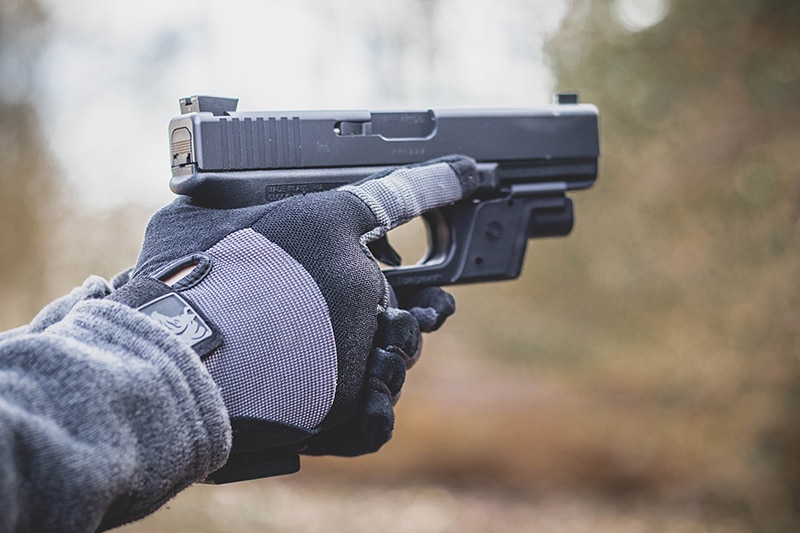
Improve your handgun skills with some simple tips. (Photo: Jacki Billings/Guns.com)
Handgun marksmanship feels challenging as a new shooter; however, with the right fundamentals and some practice, it becomes rather intuitive. Whether you’re new to the shooting sports or you’re looking to brush up on those basics, we’ve gathered some do’s and don’ts to help you improve your skills without burning through tons of ammo.
1. DO IDENTIFY THE GOAL OF TRAINING
Before heading out to train, take a moment to identify training goals and set performance metrics. In short, decide what you’re using your handgun for and train to that end goal. For example, if the goal is to become better at competitive shooting, time, movement and gear all play important factors in achieving that end. Alternatively, for concealed carry, you might opt to focus on drawing and firing from a holster.
Once you settle on a goal, define your standards so you can track progress. For concealed carry, that might be time from holster to the first shot. Again, each discipline will have different metrics, so it’s important to know your goal and train to that.
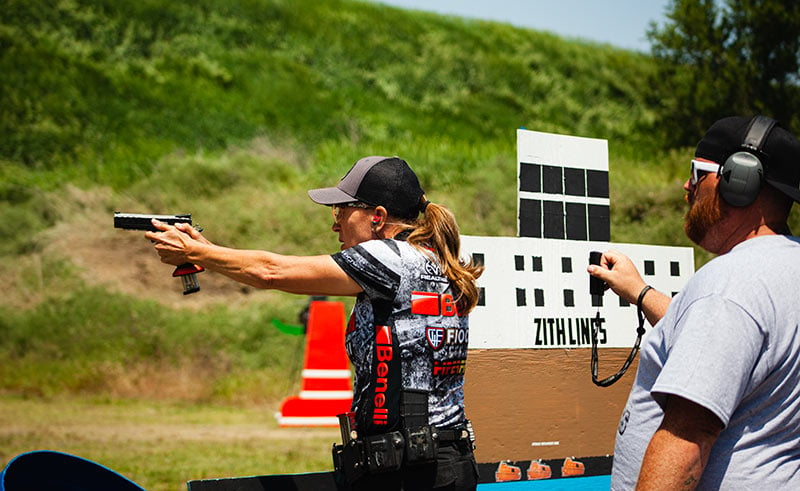
Competitive shooting comes with different objectives than other disciplines. Training to specific areas helps focus time on the range. (Photo: Jacki Billings/Guns.com)
2. DON’T OVERTHINK STANCE
The topic of stance comes up often in the gun community. Isosceles, Weaver, Modified Weaver are all terms shooters have heard more than once; but for practical purposes, the stance is a matter of convenience. Unless you only shoot from a static position at the range, there’s a decent chance that you’ll have to shoot with your feet in a less than optimal position.
Competitive shooters often shoot in motion while defensive shooters may be in a seated position, on the knees, or lying down. Worry less about your feet and focus more on upper body fundamentals – maintaining a proper grip is more important than foot placement.
3. DO TRAIN THE WAY YOU FIGHT
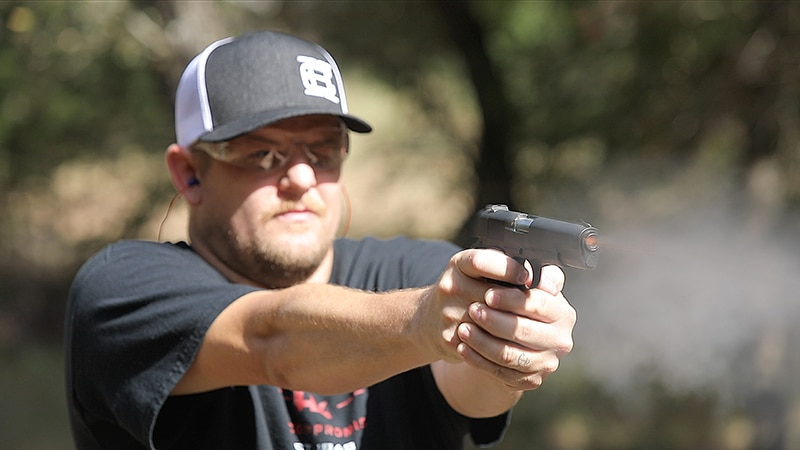
Nothing replaces actual live fire practice. Set aside time to hit the range and work with real ammo. (Photo: Don Summers/Guns.com)
Often handgun owners think their skills at a static range translate to real-world events; but sadly, this mentality is misguided. Whenever possible, practice under conditions that reflect real-world scenarios. For competition shooters, this means putting in the time to learn how to efficiently move and transition from target to target. For concealed carriers, drawing from a holster in an outfit that you normally wear translates better into what you might face on the streets.
Although dry fire training proves useful and should be employed in training sessions to work on the basics, it shouldn’t constitute the entirety of training. Humans instinctively react to loud noises and, let’s face it, guns go bang. The only way to prevent flinching, which affects points of impact on the target, is to shoot the handgun with live ammunition. Taking that Glock, Ruger or Smith & Wesson to the range and throwing real lead down range acclimatizes gun owners to the loud noises associated with shooting.
4. DON’T SKIP PRACTICE SESSIONS
This seems like a no-brainer, but unfortunately, we gun owners tend to make excuses as to why we can’t train. Shooting, like physical fitness, requires regular practice to improve performance. Hitting the gym once every six months isn’t going to bulk you up just like hitting the range once a year isn’t going to make you a better shooter. Consistency breeds improvement.
While we’re on the topic of consistency, remember that in order to replicate performance you have to be consistent in your process. A flurry of minor adjustments may seem useful but is counterproductive. Understand that there will be misses but that doesn’t mean you need to completely revamp all that you’re doing. That being said, if what you’re doing isn’t working and you’re still falling short of your goals it’s time to turn to a professional for tweaking.
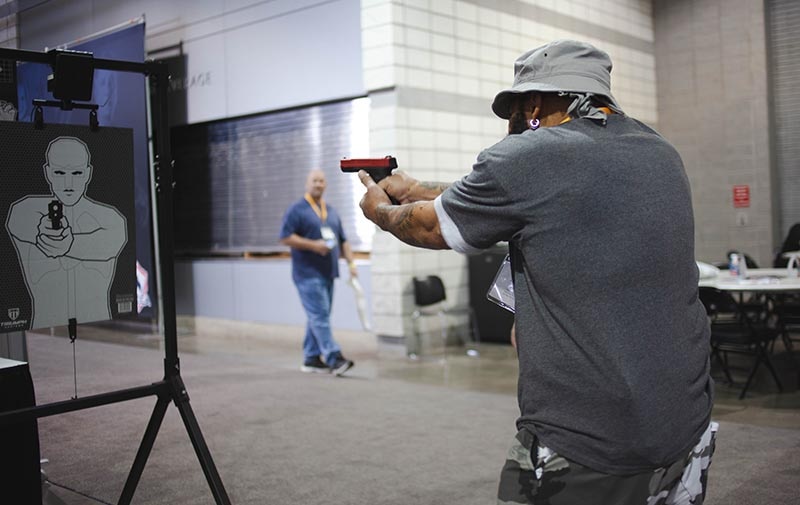
Use dry fire trainers to work on fundamentals and consistency. (Photo: Jacki Billings/Guns.com)
5. DO SEEK PROFESSIONAL INSTRUCTION
The beginning of any skill development cycle starts with attaining solid information about the fundamentals and precision. Educate yourself by enrolling in a class or one-on-one tutorial with a professional instructor. Reach out to gun schools in the area, read up on their reviews and find a quality instructor and class that fits your skill level and needs.
All the tips and tricks in the world won’t replace quality instruction from a trained professional. While you are responsible for building and maintaining skills, getting outside perspective will ensure you are building the right skills.
6. DON’T RUN A DIRTY GUN
Most modern firearms are designed to function without significant maintenance; however, regular cleanings ensure the gun works properly. Additionally, it provides a platform to familiarize yourself with the handgun and build safe handling habits that translate to better range performance.
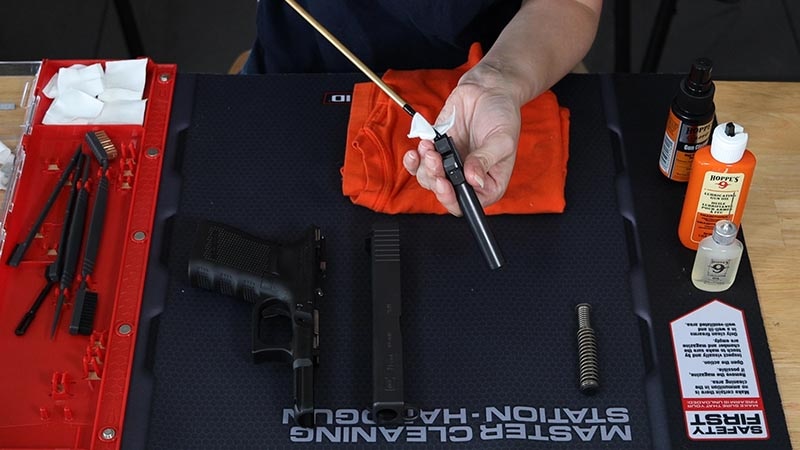
Regular maintenance familiarizes owners with the gun. (Photo: Jacki Billings/Guns.com)
FINAL TAKEAWAYS
After purchasing your desired handgun, partner these do’s and don’ts with some professional training to maximize your efforts and double down on those handgun marksmanship skills. If you’re in the market for a new or used handgun, make sure to swing by Guns.com and check out the sweet options we have on tap to fulfill your handgun needs.

